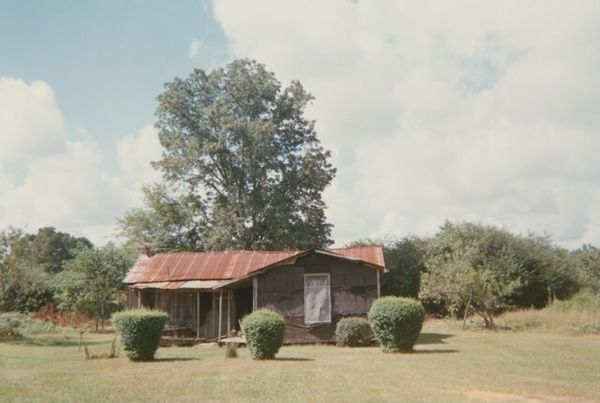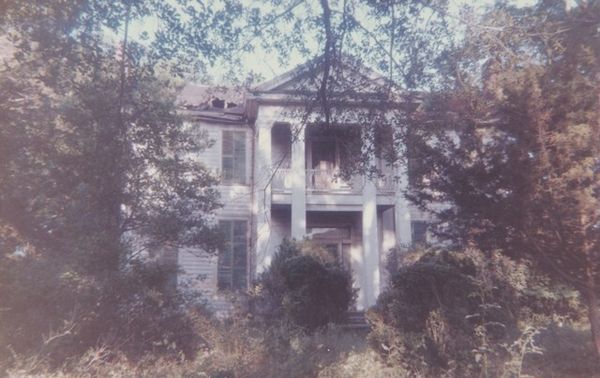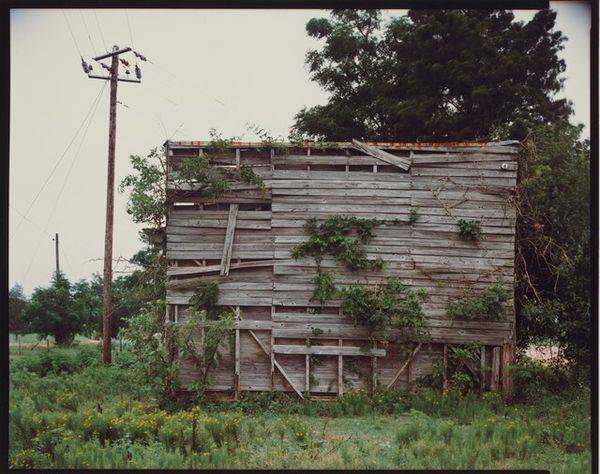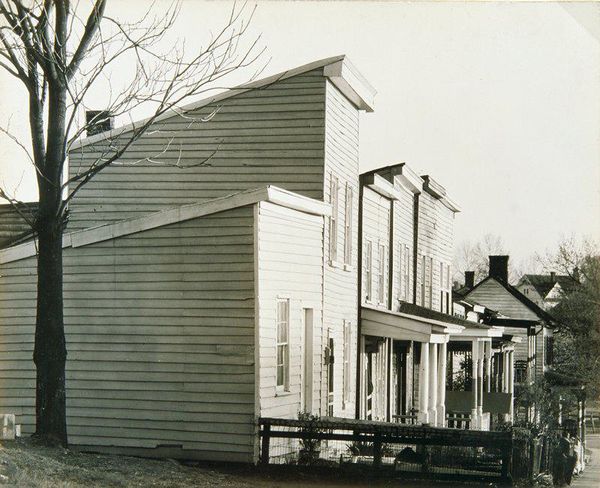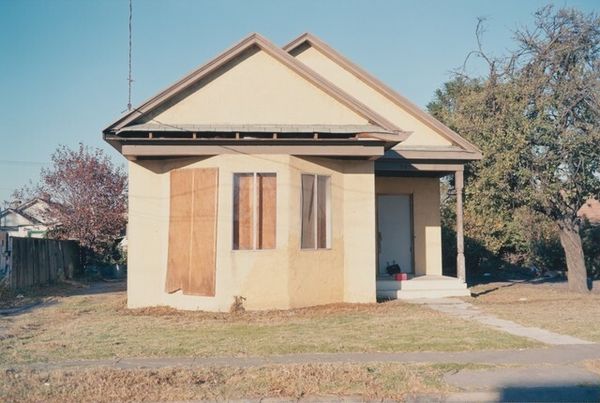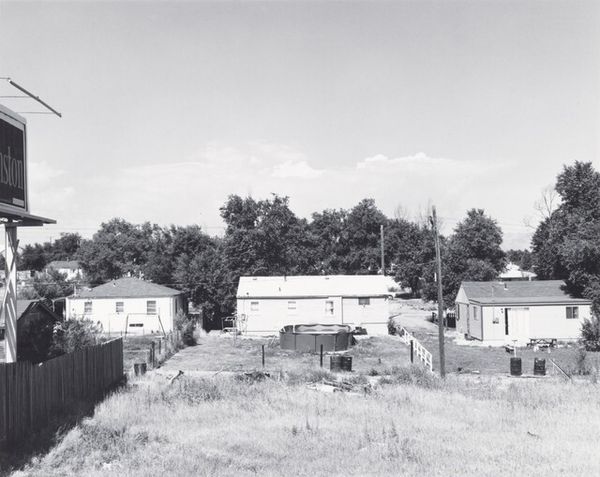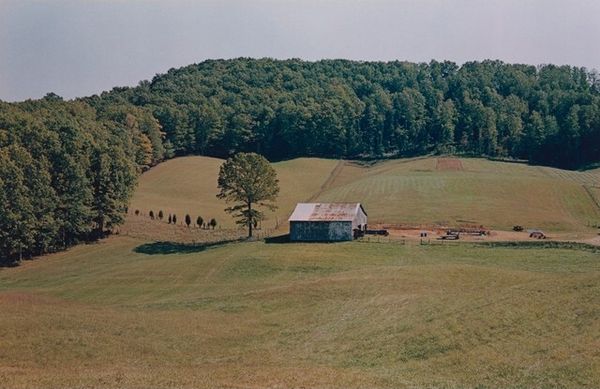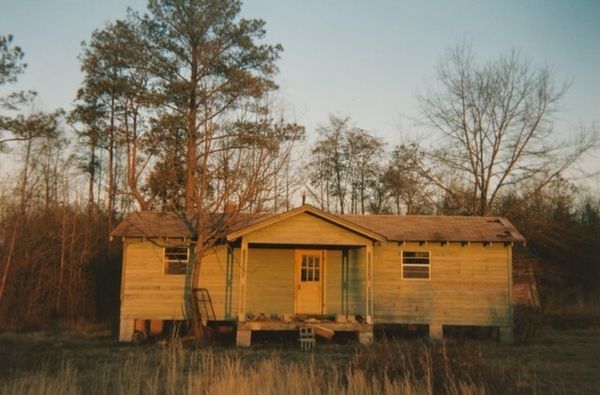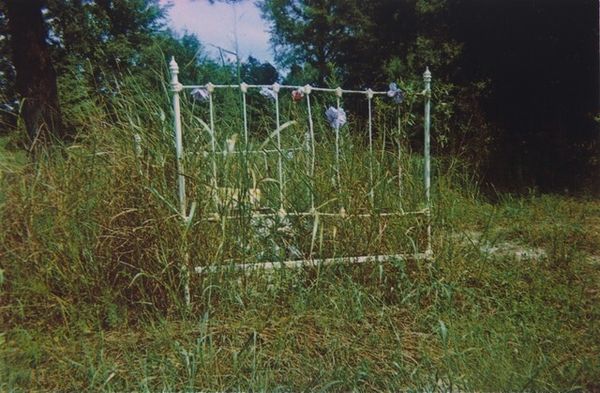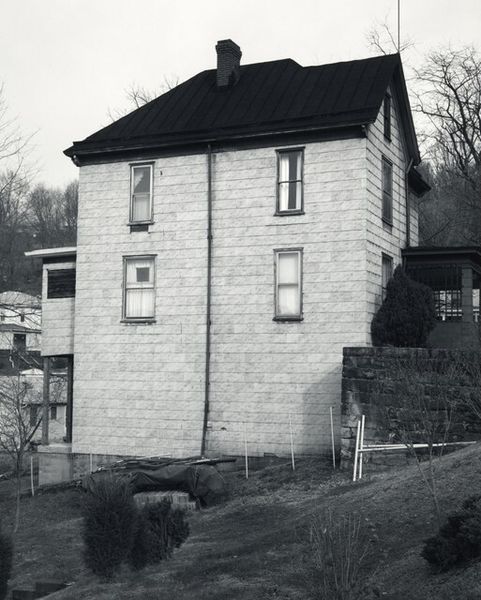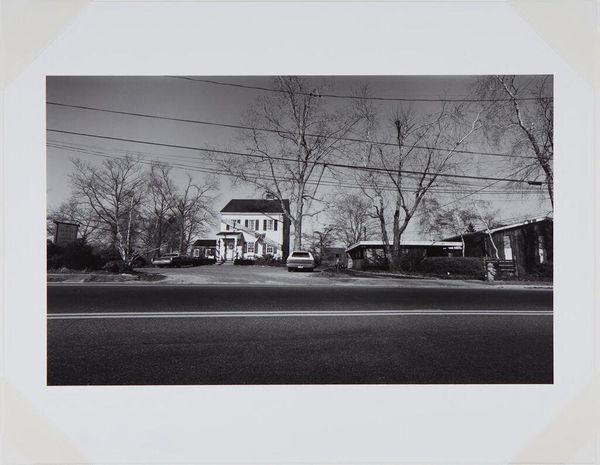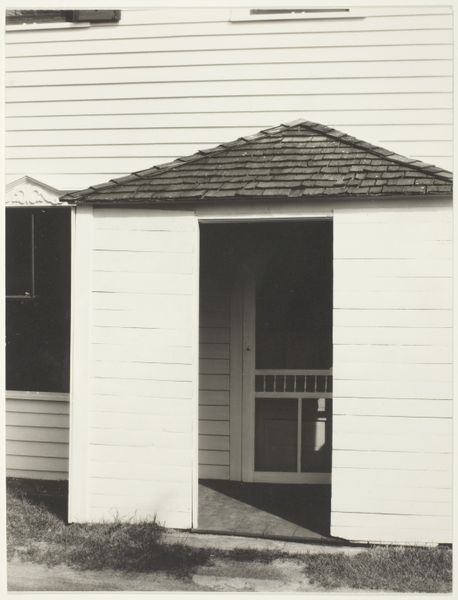
Warehouse Wall and Store, Newbern, Alabama Possibly 1990 - 1992
0:00
0:00
photography
#
contemporary
#
landscape
#
street-photography
#
photography
#
regionalism
Dimensions: image: 8.3 x 12.5 cm (3 1/4 x 4 15/16 in.) sheet: 20.3 x 25.4 cm (8 x 10 in.)
Copyright: National Gallery of Art: CC0 1.0
Editor: William Christenberry’s photograph, "Warehouse Wall and Store, Newbern, Alabama," possibly taken between 1990 and 1992, offers a very simple composition, seemingly capturing an abandoned locale. What can you tell me about the context surrounding this image? Curator: Christenberry's work often engages with the socio-political landscape of the American South, particularly Alabama. His images act as historical records, documenting vernacular architecture and cultural remnants. He meticulously photographs these buildings over decades, recording how they age and decay reflecting changes in the social fabric. Have you considered what this ongoing recording does for collective memory? Editor: I suppose the photograph becomes a testament to a particular era, an unembellished snapshot of time… but it also reflects how the socio-economic state of an area physically changes. So it's more than aesthetic, then? Curator: Exactly. It highlights how regional shifts affect everyday spaces, especially in areas grappling with economic decline and cultural transformation. The presence of a rusted wall against the store makes us think about ideas around community identity and social spaces. Is this an idyllic scene, or does it indicate that the space is disused and slowly being erased? Editor: I can see that now. The simple framing is more impactful considering the ideas of cultural preservation at play, particularly when you look at that peeling warehouse wall. Curator: Yes, his focus elevates these ordinary scenes to significant markers of social change. It also raises a pertinent question, who has the right to represent a particular community and its visual imagery? Editor: Understanding the story of Newbern through the changes in buildings and their architecture is certainly an eye-opener. It encourages viewers to critically consider regional stories and politics. Curator: Absolutely. It’s a powerful way of visualizing social history.
Comments
No comments
Be the first to comment and join the conversation on the ultimate creative platform.
